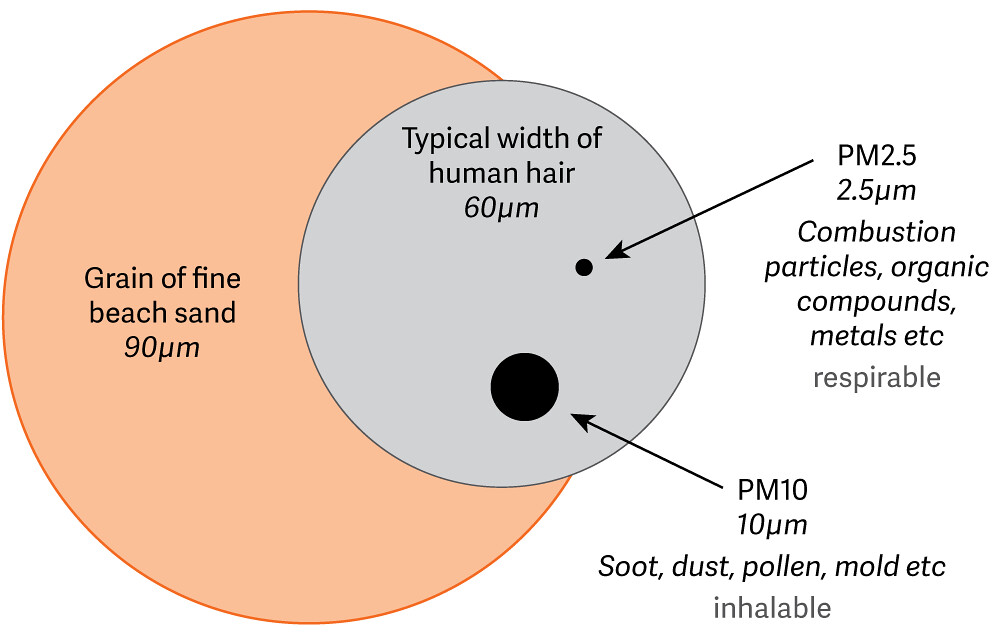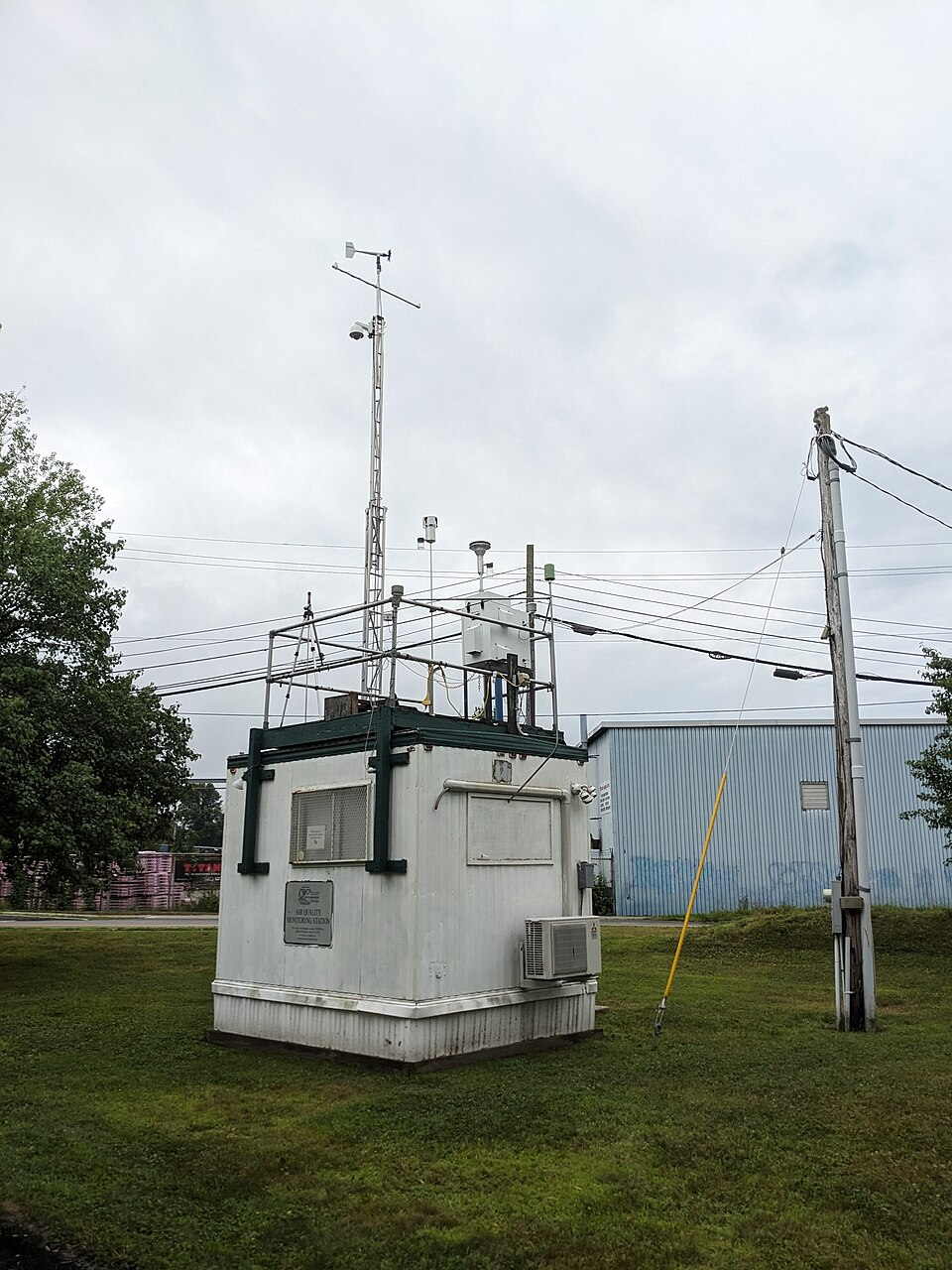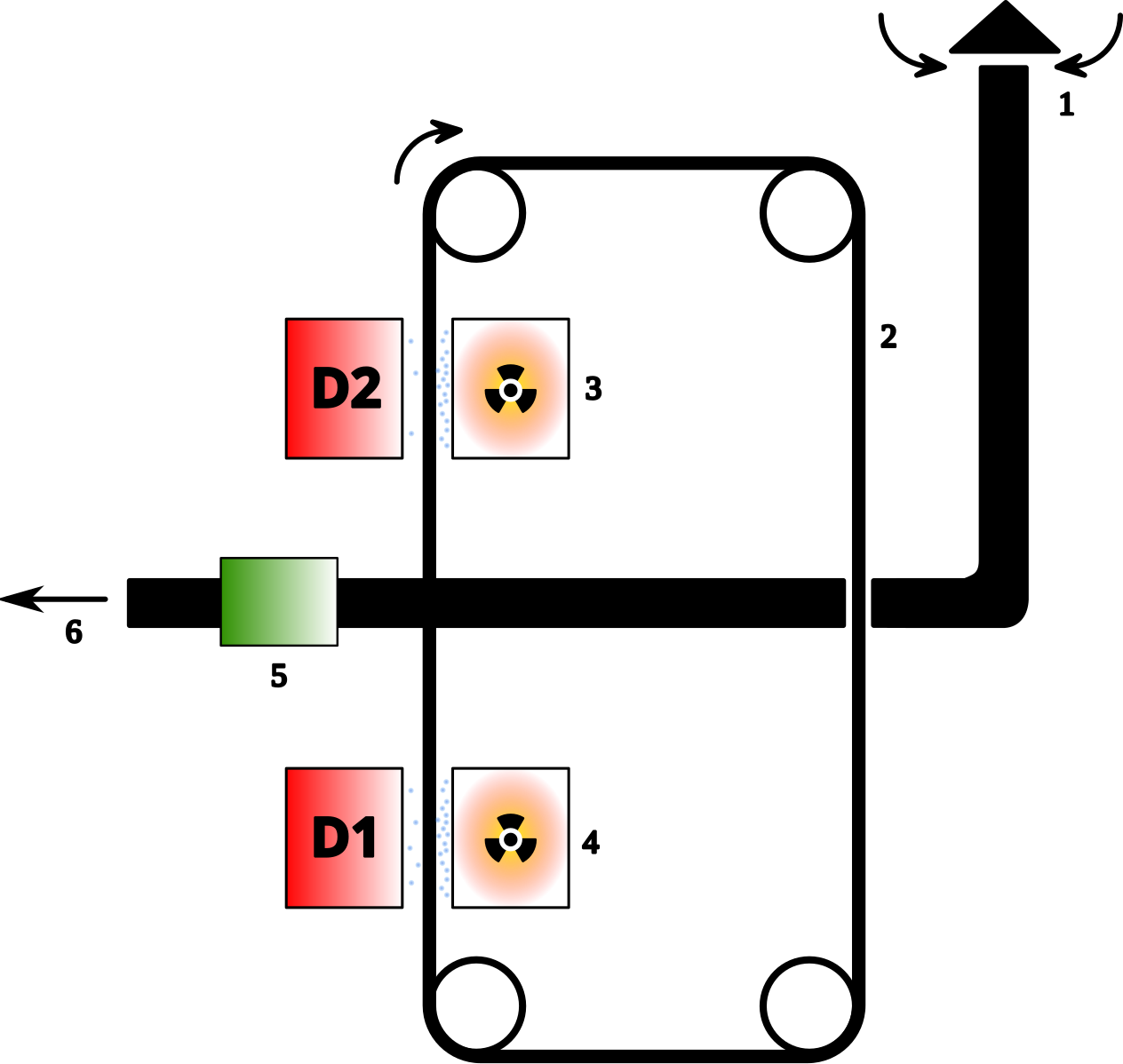IB Syllabus focus:
‘Urban air contains NOx, SO2, CO and particulates (PM10, PM2.5). Particle categories are defined by aerodynamic diameter.’
Air pollution in cities is one of the most pressing global challenges, arising mainly from human activities. Understanding common urban pollutants is essential for effective monitoring and control.
Major Urban Air Pollutants
Nitrogen Oxides (NOx)
Nitrogen oxides (NOx) are a group of reactive gases including nitrogen dioxide (NO₂) and nitric oxide (NO). These form during high-temperature combustion, such as in vehicle engines and power stations.
Nitrogen oxides (NOx): Reactive gases produced mainly from fuel combustion, contributing to smog, acid rain, and respiratory health issues.
NO₂ in particular irritates the lungs and lowers resistance to respiratory infections. In the atmosphere, NOx plays a role in the formation of tropospheric ozone, a harmful secondary pollutant.
Sulphur Dioxide (SO₂)
Sulphur dioxide (SO₂) is primarily released when coal and oil containing sulphur impurities are burned, especially in older industrial plants.
Sulphur dioxide (SO₂): A colourless gas with a sharp odour, produced from burning fossil fuels with sulphur content, contributing to acid deposition and respiratory irritation.
SO₂ is a precursor to sulphuric acid in the atmosphere, which leads to acid rain, damaging ecosystems, soils, and infrastructure.
Carbon Monoxide (CO)
Carbon monoxide (CO) is an odourless, colourless gas produced by incomplete combustion of carbon-based fuels. Vehicles and poorly ventilated indoor heating systems are major urban sources.
Carbon monoxide (CO): A colourless, odourless gas formed during incomplete combustion, which binds strongly to haemoglobin, reducing oxygen transport in the blood.
Because it reduces the blood’s oxygen-carrying capacity, CO can cause headaches, dizziness, or even death at high concentrations.
Particulates (PM10 and PM2.5)
Particulates are tiny solid or liquid particles suspended in the air. They are classified by their aerodynamic diameter, which determines how deeply they penetrate the respiratory system.

Labeled comparison of particle sizes showing PM₁₀ and PM₂.₅ relative to a human hair, illustrating why smaller particles infiltrate deeper into the lungs. The figure emphasises aerodynamic diameter—the basis used in regulation and health guidance. Source.
Particulate Matter (PM): Small airborne particles measured by size.
PM10: Particles less than 10 micrometres in diameter.
PM2.5: Particles less than 2.5 micrometres in diameter.
PM10 can reach the upper respiratory tract and cause irritation.
PM2.5 is especially dangerous as it penetrates deep into the lungs and even enters the bloodstream, increasing risks of cardiovascular and respiratory disease.
Sources of Urban Pollutants
Key Emission Pathways
Transport: Cars, trucks, buses, and motorcycles release NOx, CO, and particulates.
Industry: Factories and power plants burning coal or oil emit SO₂ and particulates.
Domestic activities: Wood stoves, heating fuels, and open burning contribute to both particulates and CO.
Construction: Dust and fine particles add to local particulate concentrations.
These sources are magnified in dense urban areas, where traffic congestion and industrial activities are concentrated.
Health Impacts of Urban Air Pollutants
Respiratory and Cardiovascular Effects
NOx and SO₂: Trigger asthma, bronchitis, and reduce lung function.
CO: Reduces oxygen supply, affecting brain and heart performance.
PM2.5: Increases the risk of heart attacks, strokes, and long-term respiratory illness.
Vulnerable Populations
Children, the elderly, and those with pre-existing conditions are most at risk.
Urban dwellers exposed to high traffic pollution face long-term health consequences.
Environmental Impacts of Urban Pollutants
Air Quality and Visibility
Particulates reduce visibility and contribute to urban haze.
NOx and SO₂ lead to the formation of secondary pollutants like acid rain and ground-level ozone.
Ecosystem Effects
Acid deposition from SO₂ and NOx disrupts aquatic and forest ecosystems.
Ozone damages crops, reducing agricultural productivity near polluted urban centres.
Measurement and Monitoring of Pollutants
Air Quality Indices (AQI)
Cities measure pollutant concentrations to generate an Air Quality Index (AQI), which communicates risk levels to the public. High AQI values indicate unhealthy conditions.
Monitoring Techniques
Fixed monitoring stations in urban hotspots measure NOx, SO₂, CO, and PM.

An outdoor regulatory air-quality monitoring station used to sample criteria pollutants in urban environments, including nitrogen oxides (NOx), sulfur dioxide (SO₂), carbon monoxide (CO), and particulate matter (PM). Intake inlets draw ambient air to analysers housed within the cabinet. Source.
Remote sensing using satellites provides regional pollution data.
Mobile sensors mounted on vehicles and drones supplement fixed networks.

Simplified diagram of a beta attenuation monitor (BAM), a common regulatory instrument for measuring particulate mass in ambient air. Air is drawn across a filter tape and beta radiation attenuation is used to determine the collected particle mass. This technical detail slightly exceeds the syllabus but directly explains how PM₁₀/PM₂.₅ data are produced. Source.
These data are used by governments to enforce regulations and issue health advisories.
Key Points for IB ESS Students
Urban air pollutants include NOx, SO₂, CO, and particulates (PM10 and PM2.5).
Aerodynamic diameter is the basis for defining particulate categories.
Human health, ecosystems, and urban infrastructure are all significantly impacted.
Understanding pollutant types, sources, and impacts is fundamental to designing effective environmental policies.
FAQ
Aerodynamic diameter is a way of describing how particles behave in the air, rather than their actual physical size. It takes into account shape, density, and size, expressing how a particle settles or moves through the atmosphere.
This is important because health risks depend on how far into the respiratory system particles travel, which is determined by their aerodynamic properties.
PM2.5 particles are much smaller and can bypass the body’s natural defences, reaching deep into the alveoli of the lungs.
From there, they can enter the bloodstream and contribute to cardiovascular and systemic health problems.
In contrast, PM10 particles are generally trapped earlier in the nose and throat, causing irritation but less systemic risk.
Nitrogen oxides (NOx) react with sunlight and other chemicals to form secondary pollutants.
Key processes include:
Formation of ground-level ozone (a harmful component of photochemical smog).
Contribution to acid deposition when NOx reacts with water to form nitric acid.
Thus, NOx acts as both a primary pollutant and a precursor to wider environmental issues.
Levels of carbon monoxide (CO) vary depending on:
Traffic density and congestion patterns.
Weather conditions, with still air leading to higher build-up.
Seasonal fuel use, such as heating in colder months.
Poor ventilation in urban canyons (streets with tall buildings) also traps CO, worsening local air quality.
Monitoring stations use specialised instruments:
Chemiluminescence analysers for NOx, detecting emitted light during chemical reactions.
Fluorescence monitors for SO₂, measuring ultraviolet light emissions.
Infrared absorption analysers for CO, detecting how CO molecules absorb infrared radiation.
Each method targets unique chemical or physical properties, allowing accurate tracking of pollutant concentrations in real time.
Practice Questions
Question 1 (2 marks)
State two urban air pollutants identified in the IB syllabus and briefly describe one health impact of each.
Mark scheme:
Identification of two pollutants from the syllabus (NOx, SO₂, CO, PM10, PM2.5) (1 mark each, maximum 2 marks).
Award marks only if the pollutant is correctly paired with an appropriate health impact.
NOx → triggers asthma/respiratory irritation (1 mark if correct).
SO₂ → causes bronchitis/respiratory irritation (1 mark if correct).
CO → reduces oxygen in blood, causes dizziness/health risk (1 mark if correct).
PM10 → causes respiratory tract irritation (1 mark if correct).
PM2.5 → penetrates lungs/bloodstream, causes cardiovascular disease (1 mark if correct).
Maximum 2 marks.
Question 2 (5 marks)
Explain how particulate matter (PM10 and PM2.5) differs in size and impact on human health, and outline how urban monitoring stations measure these pollutants.
Mark scheme:
Correct reference to size categories by aerodynamic diameter (PM10 < 10 µm; PM2.5 < 2.5 µm) (1 mark).
Statement that PM2.5 penetrates deeper into the lungs/bloodstream, while PM10 affects the upper respiratory tract (1–2 marks depending on detail).
Health impacts: respiratory problems, cardiovascular issues, long-term illness (1 mark for at least one relevant effect).
Monitoring: mention of fixed stations/air quality monitoring measuring particulate mass concentrations in µg m⁻³ (1 mark).
Additional detail such as beta attenuation monitors or filters to quantify PM (1 mark).
Maximum 5 marks.

